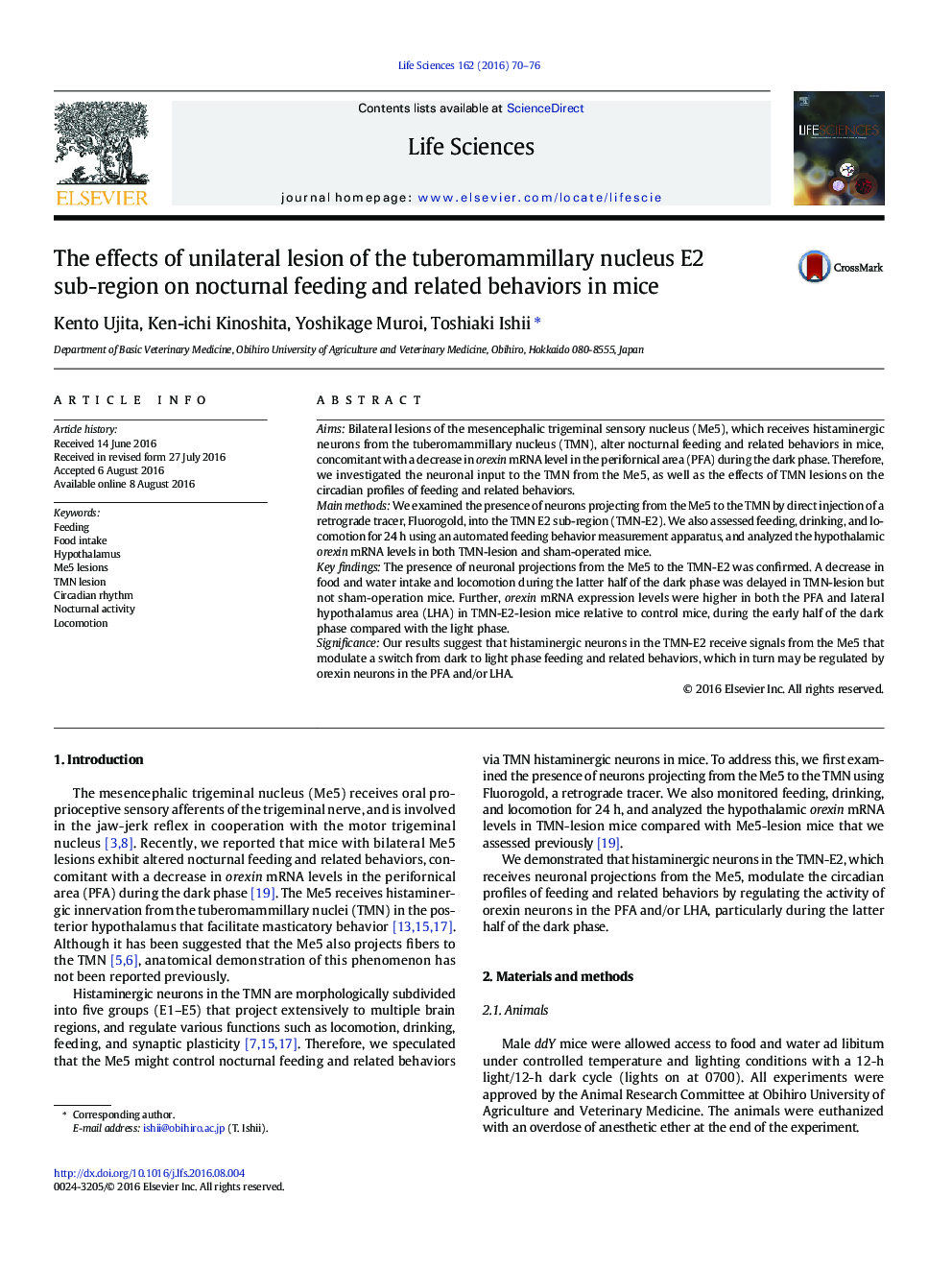| Article ID | Journal | Published Year | Pages | File Type |
|---|---|---|---|---|
| 5841268 | Life Sciences | 2016 | 7 Pages |
AimsBilateral lesions of the mesencephalic trigeminal sensory nucleus (Me5), which receives histaminergic neurons from the tuberomammillary nucleus (TMN), alter nocturnal feeding and related behaviors in mice, concomitant with a decrease in orexin mRNA level in the perifornical area (PFA) during the dark phase. Therefore, we investigated the neuronal input to the TMN from the Me5, as well as the effects of TMN lesions on the circadian profiles of feeding and related behaviors.Main methodsWe examined the presence of neurons projecting from the Me5 to the TMN by direct injection of a retrograde tracer, Fluorogold, into the TMN E2 sub-region (TMN-E2). We also assessed feeding, drinking, and locomotion for 24Â h using an automated feeding behavior measurement apparatus, and analyzed the hypothalamic orexin mRNA levels in both TMN-lesion and sham-operated mice.Key findingsThe presence of neuronal projections from the Me5 to the TMN-E2 was confirmed. A decrease in food and water intake and locomotion during the latter half of the dark phase was delayed in TMN-lesion but not sham-operation mice. Further, orexin mRNA expression levels were higher in both the PFA and lateral hypothalamus area (LHA) in TMN-E2-lesion mice relative to control mice, during the early half of the dark phase compared with the light phase.SignificanceOur results suggest that histaminergic neurons in the TMN-E2 receive signals from the Me5 that modulate a switch from dark to light phase feeding and related behaviors, which in turn may be regulated by orexin neurons in the PFA and/or LHA.
